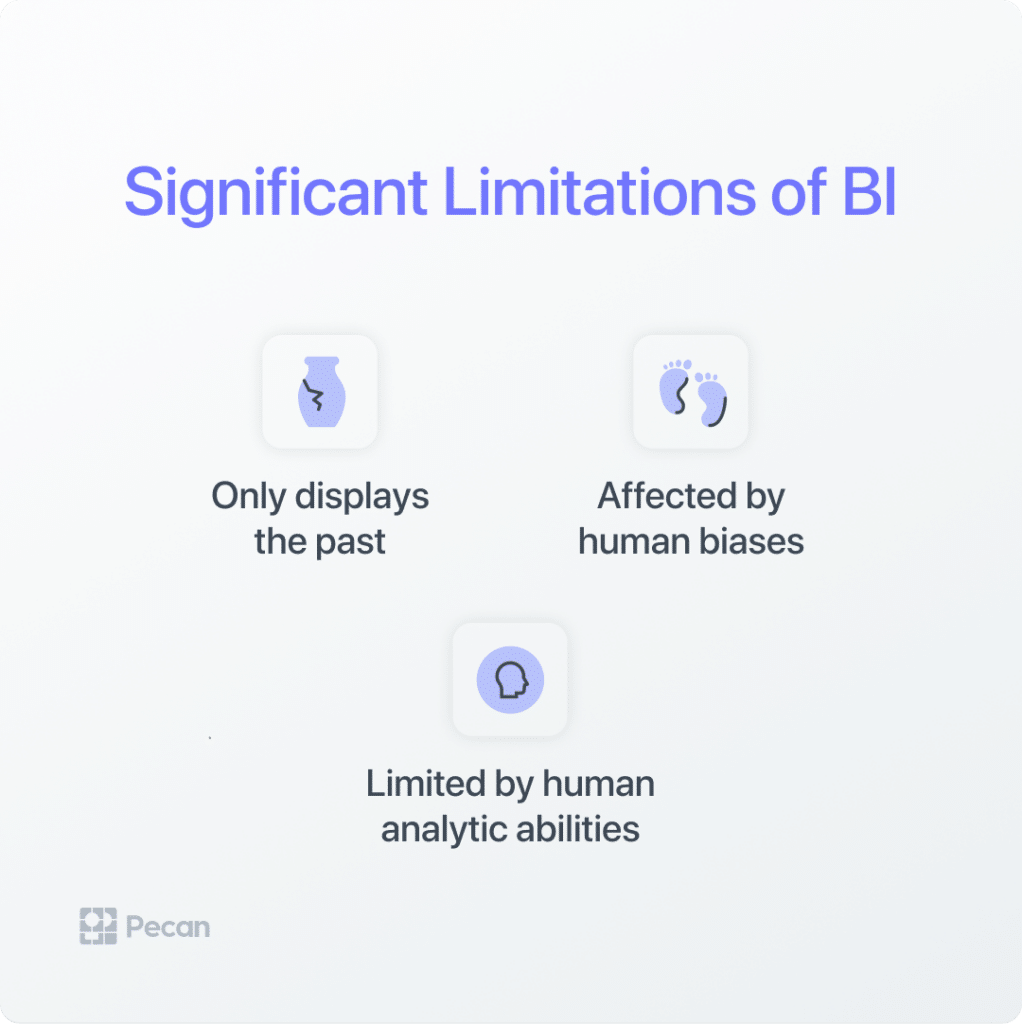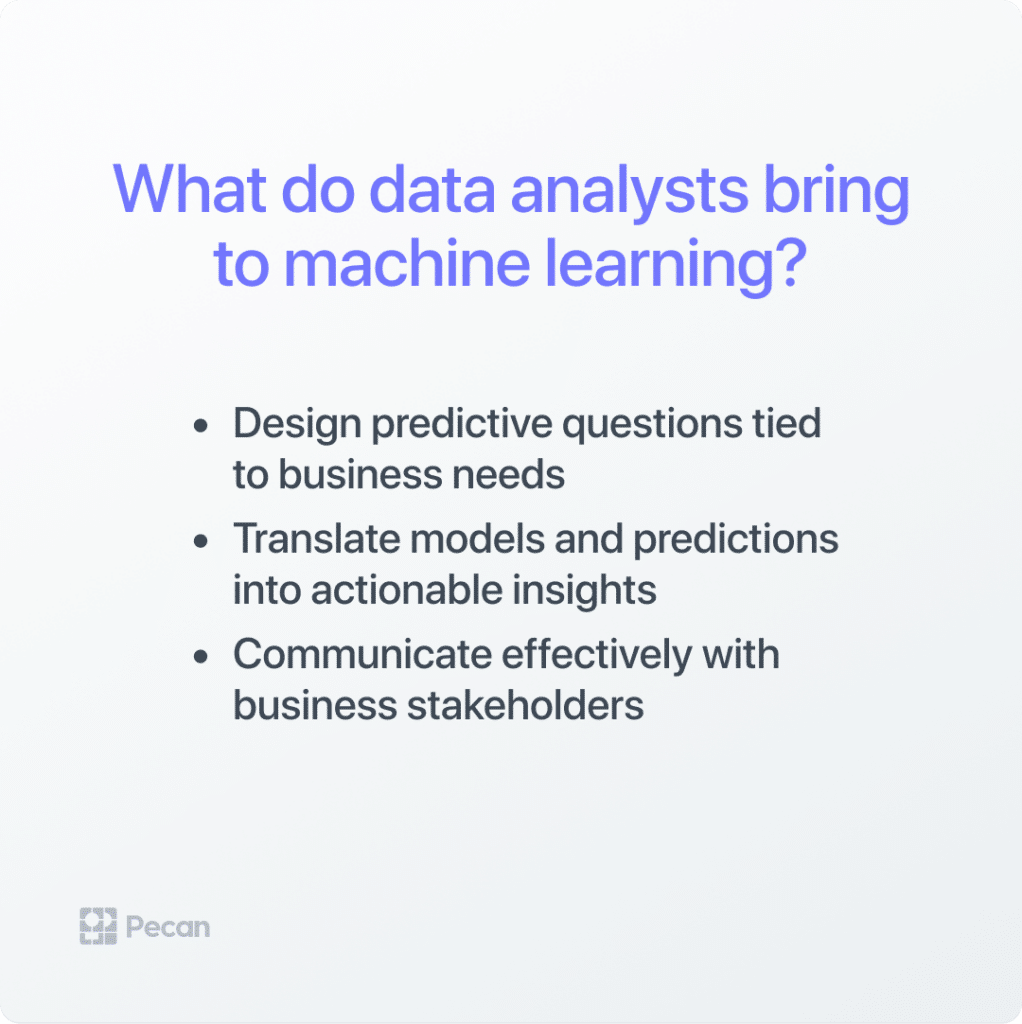Imagine you’re a chef who wants to introduce a new dish at a restaurant you work at. You think it’s delicious and are confident it will be a hit with customers.
But no matter how good the food tastes, the restaurant’s owner will want to understand its ingredients, cost, and the profit it’s likely to generate. So you’ll have to be prepared to advocate for your creation.
All this information will play a critical role in convincing the restaurant owner to allow you to pursue the new menu item.
Now, as a mid-level employee in your organization…
You’re likely to face a similar challenge when looking to launch a project that differs from how your organization usually does things, even if the goal is to elevate your skills and make an exciting new impact. This is typically because it will require additional time, money, and human resources or simply because it’s not part of the current plan.
So, if your goal is to start using predictive analytics to create that impact, you’ll need to earn your boss’s buy-in and support to move forward.
The most important thing you’ll need to do is demonstrate the real-world value machine learning can bring to your business – whether it’s increased revenue, reduced costs, greater efficiency, or gaining a competitive advantage.
But there’s another piece to the puzzle. Even though you understand machine learning and what it can help you achieve, you’ll need to explain some key concepts to your boss so they aren’t stuck with incorrect preconceptions about how ML works. How you can do that will be the focus of the rest of this article.
Ready? Let’s go.
Why use machine learning when you've got BI tools?
When making predictions about future customer behavior, you can certainly use historical data as a starting point. This is the typical business intelligence (BI) approach, where you examine what happened in the past in order to make educated guesses about what might happen in the future.
However, there are some important limitations to a BI-only approach:
- When you look at past data, you only see what happened then. You can only assume that any emerging trends will continue, and you don’t know if something unexpected will arise that completely changes the pattern.
- You only see the patterns you choose to look for (or that are shown to you). This creates biases in your analysis. For example, you may only detect patterns that confirm your existing beliefs and miss important ones because you’re not looking for them.
- Humans can only detect correlations between two variables, whereas machine learning algorithms can detect multivariate patterns and relationships invisible to the human eye. They can also take into account infinitely more variables than humans can.
Now contrast this with predictive analytics, which relies on the power of machine learning. By training algorithms based on historical data, you can generate highly accurate and unbiased predictions that are based on patterns, trends, and relationships within your data – and which would otherwise be undetectable.
This empowers your organization to make better-informed decisions and take actions that are more likely to positively impact your business. So, although looking at historical data can be a useful starting point, machine learning will take your predictions to the next level.
What do data analysts have to do with machine learning?
Your manager, aware that machine learning is typically the domain of data scientists, might ask, “Why not just hire a data scientist who can build models?”
Typically, to accomplish these tasks, data scientists had to build complex machine learning algorithms and models by hand-coding them. But they do not always have the same understanding of business needs or the specific nuances of the data they’re working with.
Data analysts are typically more connected to the needs of the business and are better able to identify the problems or opportunities that can be solved through predictive modeling. Not only can they work with data scientists (or use a platform like Pecan) to ensure that the final model is accurate, but they can also:
- Design predictive questions that will help guide business decisions and strategy
- Translate model outputs and statistical analyses into actionable business insights
- Communicate insights to business stakeholders in a way that’s accessible and actionable
It’s all about driving real-world impact. Although connecting your data and training a model is super important (all of which Pecan makes super easy), machine learning is about creating business value. For deeper exploration of why data analysts are generally better equipped than data scientists to carry out predictive modeling, check out our recent blog post.
Aren’t machine learning models impossible to understand?
Like many other people, your boss might think machine learning models are opaque, hard-to-comprehend tools (what some people call “black boxes”) whose methods are mysterious, unintelligible, or both. They may see machine learning, or the broader field of AI, as an esoteric science that can only be understood by a privileged few.
Therefore, when it comes to predictive modeling, they may think it will be impossible to understand what the predictions are based on, and whether the predictions are even accurate.
This is understandable. But also super incorrect!
While many machine learning models are indeed complex and difficult to interpret, they are ultimately just mathematical models. By using the right techniques and tools, you can gain a very clear understanding of how these models work and even validate their predictions.
Pecan analyzes “feature importance” to identify which variables (a.k.a. features) most affect a model’s predictions. This information is communicated through a convenient widget so you can quickly and easily understand the factors driving the results. Feature importance also reveals what variables you can focus on to improve the model’s performance and generate real business value.
For example, say your model’s feature importance revealed that “time since last contact” is a key predictor of upsell behavior. This could dramatically influence your customer-outreach strategy, resulting in a meaningful uptick in upsells (and a large increase in revenue).
In addition, Pecan provides an easy-to-use dashboard for evaluating the accuracy of your model’s predictions, monitoring how it performs over time, and identifying any trends or patterns that may require attention.
There’s an exciting world of predictive modeling out there! So, don’t let any of these questions get in your way. And if they do, don’t hesitate to reach out to us. We’ll be happy to show how you can cook up excellent results with machine learning while earning that Michelin stamp of approval from your boss.





